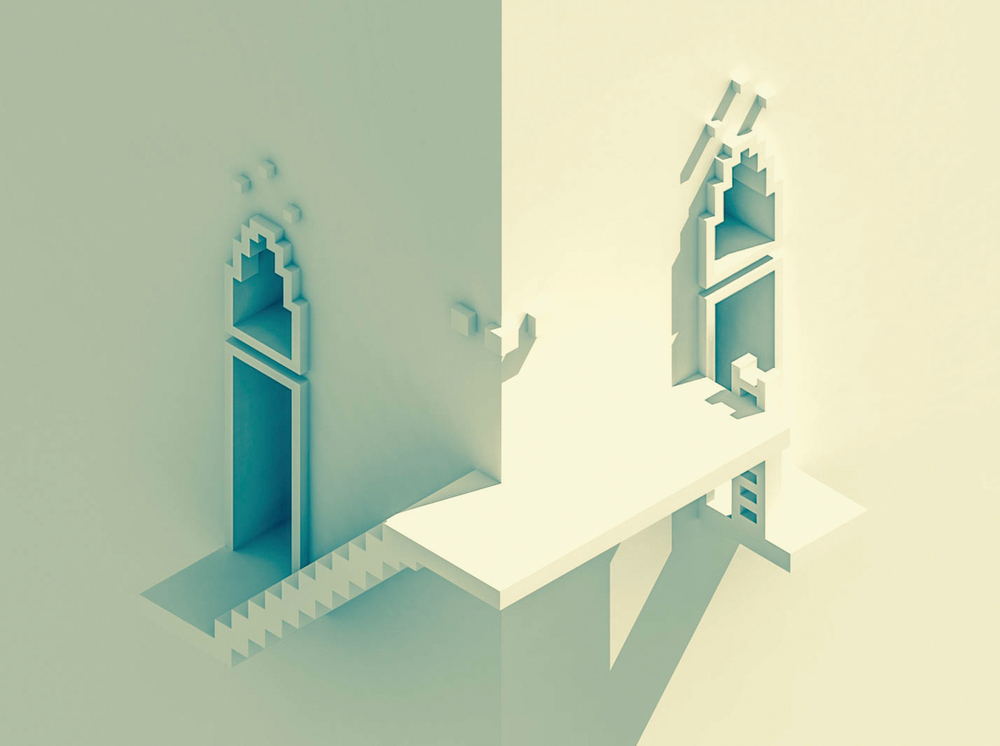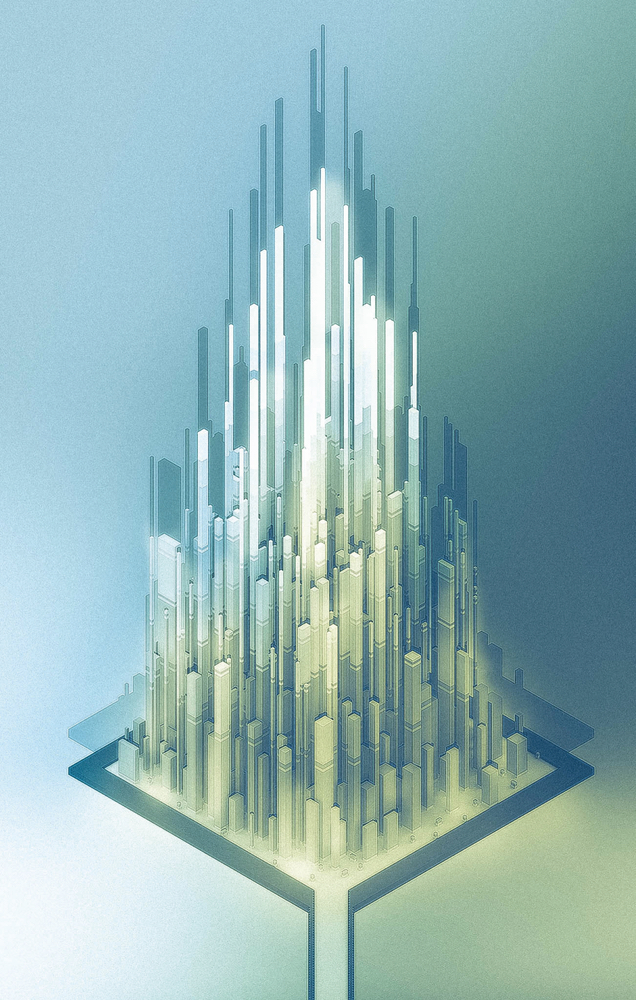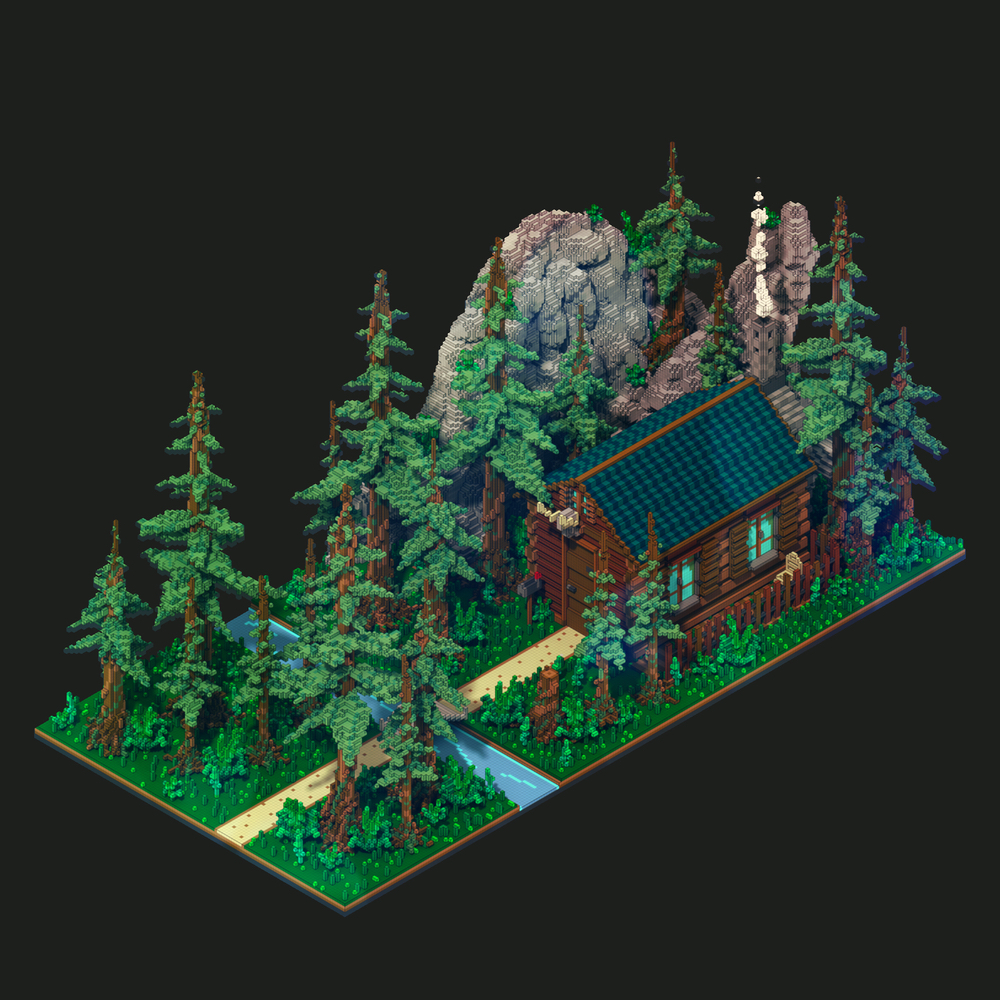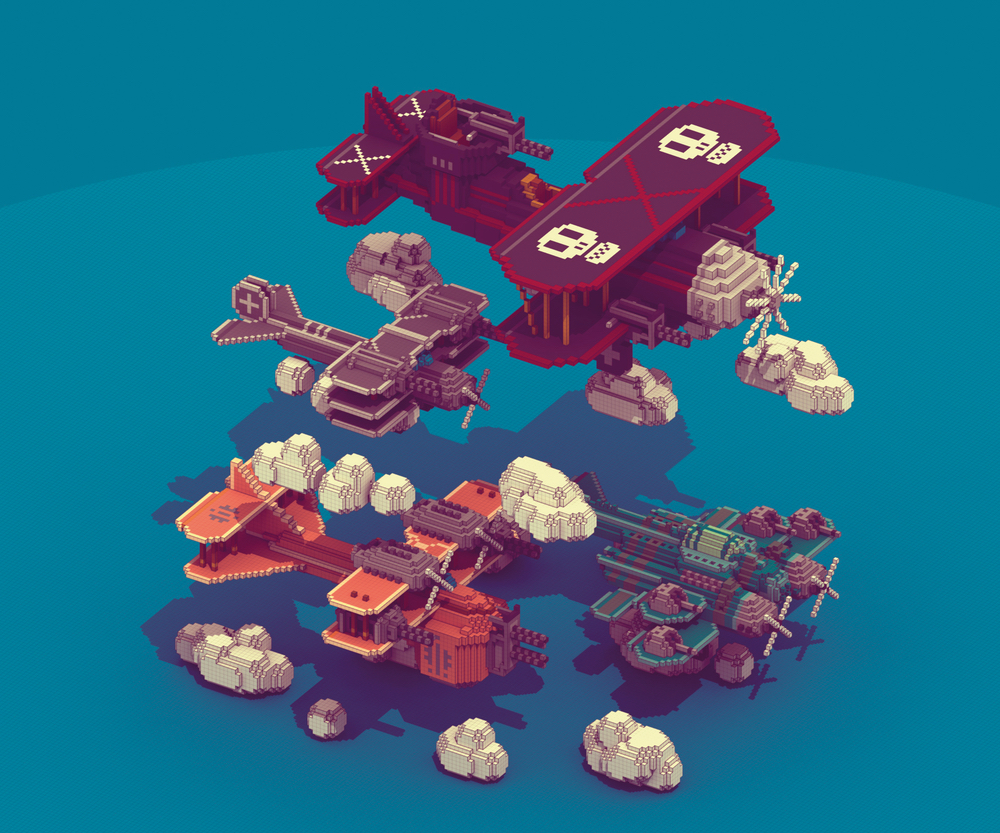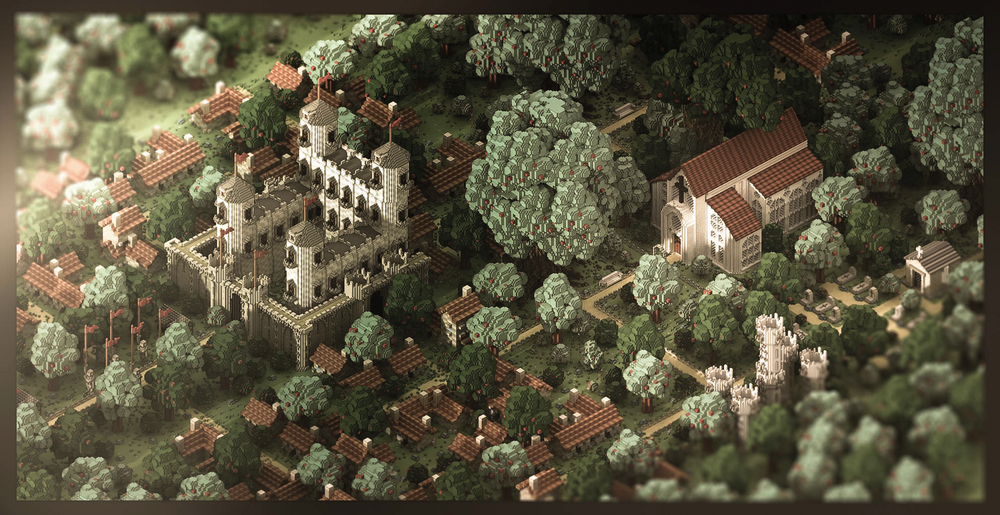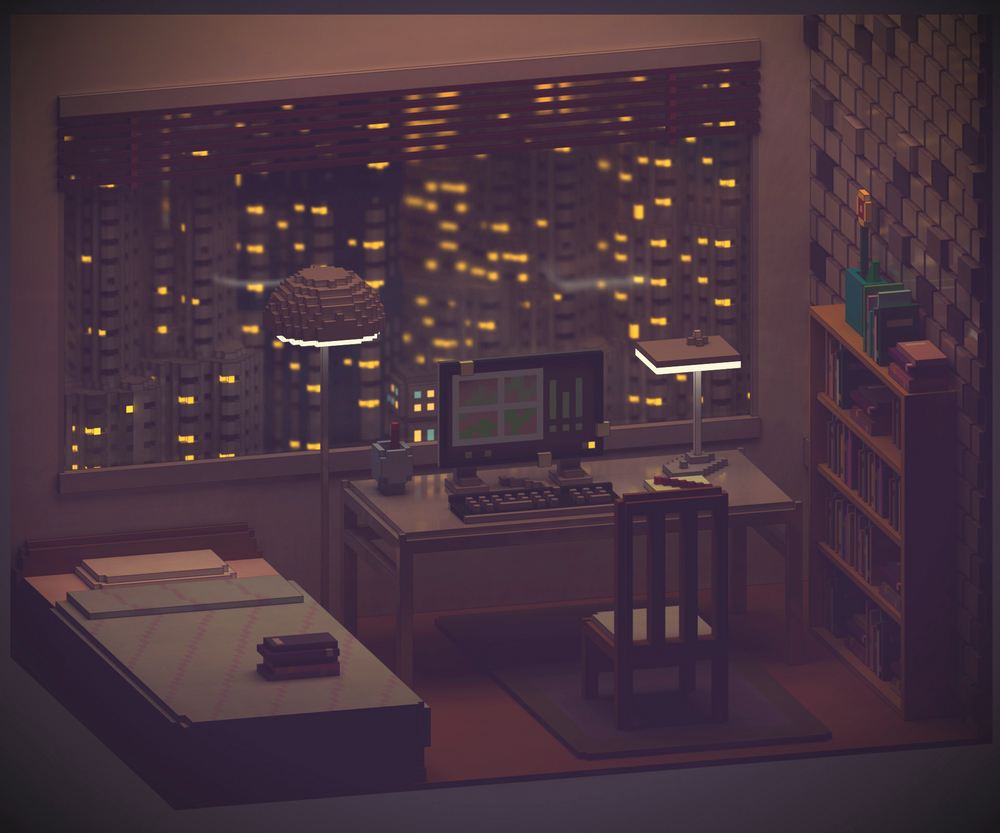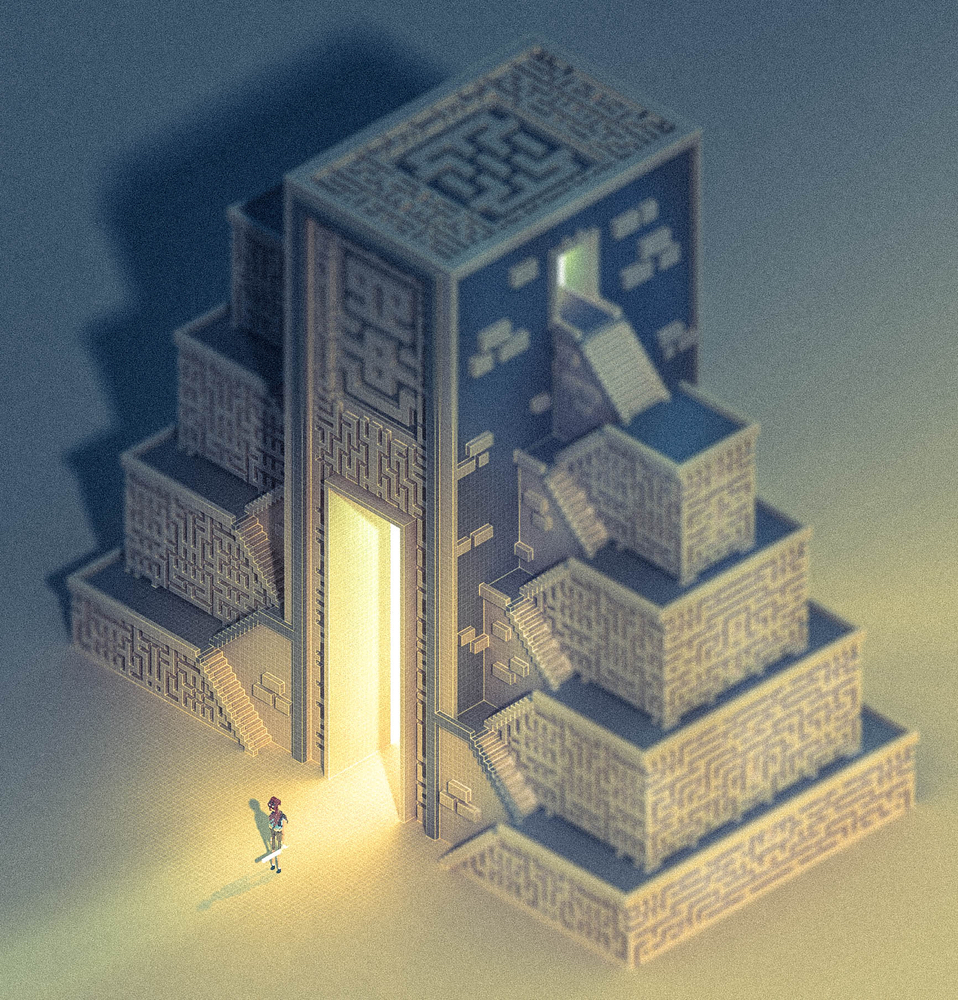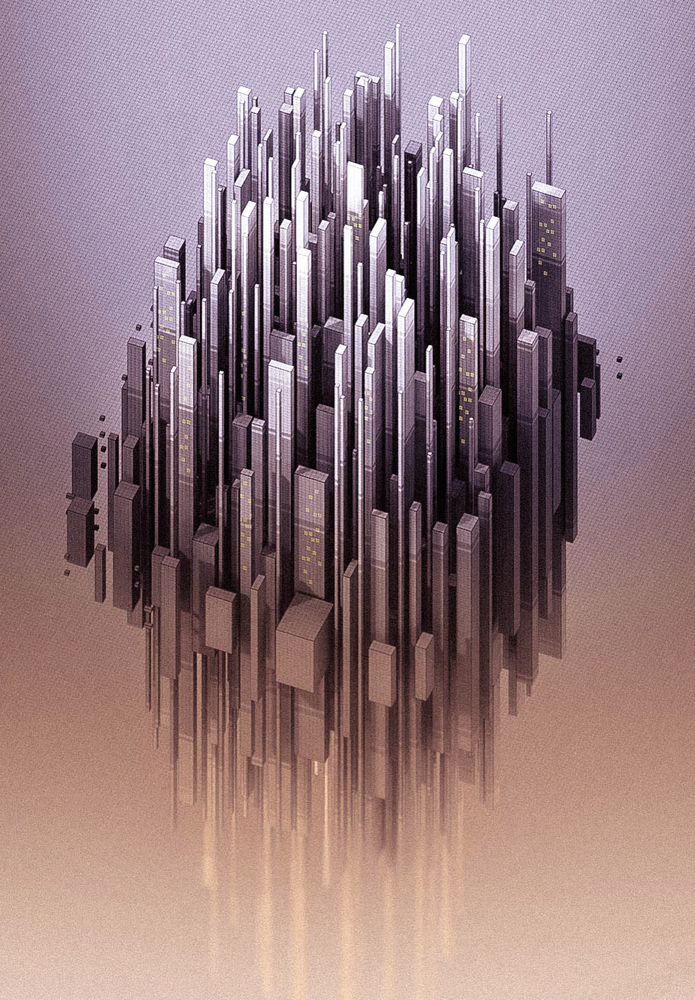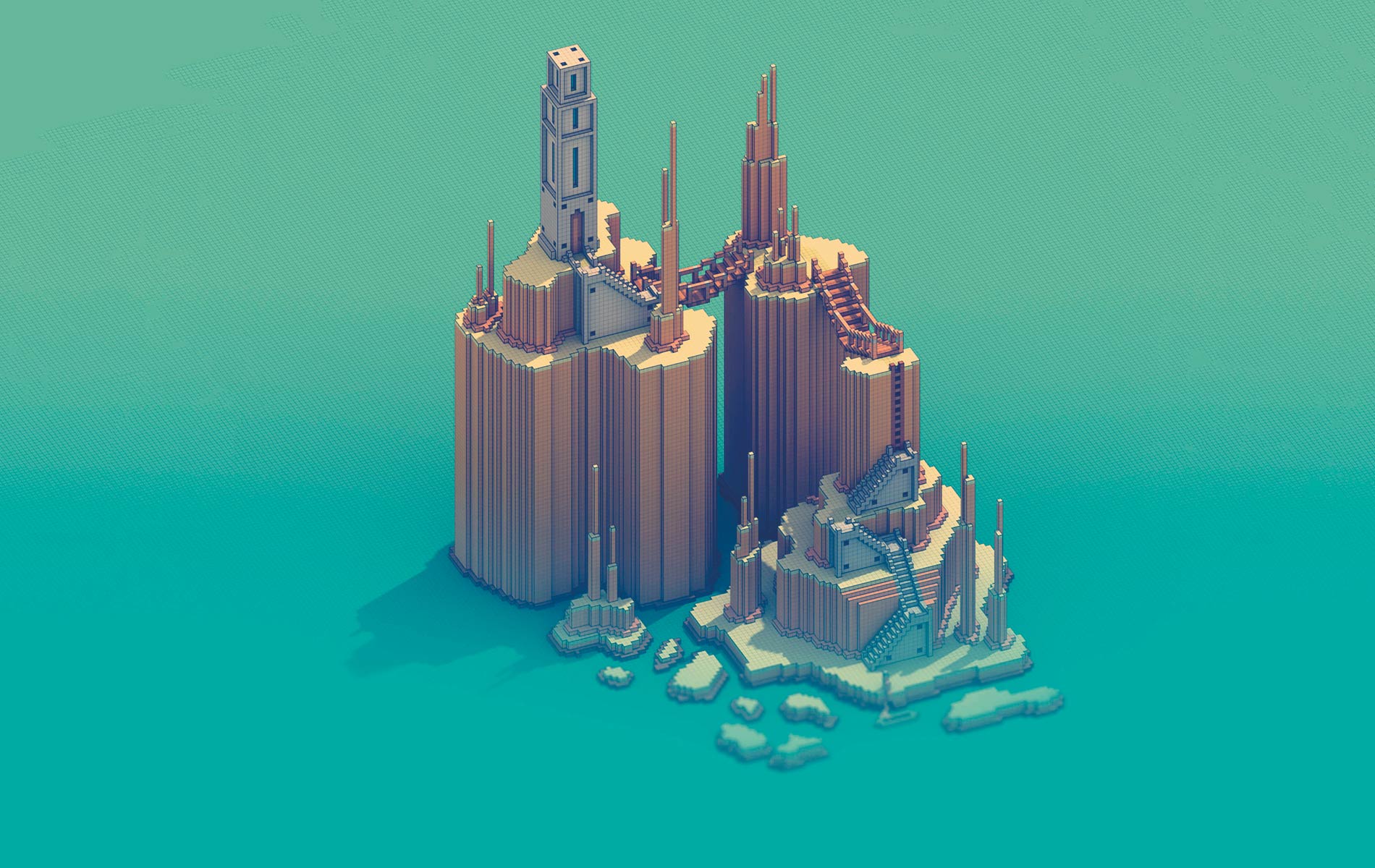
vie-magazine-video-game-design-hero
Block by Block
Gaming’s Contemporary Art Form
By Charles Singletary Jr. | Artwork by Sir Carma
Are video games art? No matter your stance, it can certainly be argued that, at the least, the wondrous environments gamers traverse fall into this abstract definition:
art – \ˈärt\ noun: the conscious use of skill and creative imagination especially in the production of aesthetic objects
If video games can fall into this mainstream definition of art, do gamers break the imaginative illusion when they play within these beautifully crafted set pieces? “Not at all, since I consider video games as art themselves,” says voxel artist Sir Carma. “Some of them can be art masterpieces. When I play Journey, for example, or Shadow of the Colossus, being able to interact and walk through those landscapes—it transcends the art form. The whole piece transports you, gives you emotions that an illustration couldn’t.”
The birthdate of “art” may never be truly known, but the discipline of art history took shape in the nineteenth century. The appreciation of art, of the beautiful and the ugly, has evolved from the archaic methods of Stone Age petroglyphs to the “antitraditional” methods of postmodernism. But art in the digital space is in its infancy. Sir Carma, whose real name is Antoine Lendrevie, has firmly embedded himself in this youthful artistic discipline, albeit just in his free time while also working a full-time job.
“Digital art” falls under the wide umbrella of any work using digital media for production or display, with the earliest form arriving in the 1960s with British artist Desmond Paul Henry’s drawing machine. Today, digital drawing pads and even virtual-reality sculpting blur the line between digital and traditional art forms. Pixel art has gained more notoriety from video games such as Hotline Miami (2012), Fez (2012), and Super Meat Boy (2010), which utilized a vintage style of design. Popularized by Minecraft (2009), voxel art is growing at a similar pace.
To understand voxel art, you must understand pixel art as well. While all digital images technically contain pixels—those tiny dots that make up the completed picture—pixel art involves the building of an image pixel by pixel. Voxel art is the same, but on a 3-D plane, using digital building blocks instead of flat pixels to create a computerized landscape. “A bit more than a year ago, I started to follow more and more pixel artists on Twitter,” says Sir Carma. “The indie scene was still blooming; pixel art was very popular, and I particularly liked it. I started playing video games in the eighties, so I liked that nostalgic feeling that comes with pixel art.”
Though voxel art is fairly young, Sir Carma still finds himself inspired by fellow artists in the medium including Marco Peschiera (@marcoapc_art) and Zach Soares (@y2bcrazy). “My biggest source of inspiration is the indie video game community, which is very active and creative at the moment,” Sir Carma says. Outside of gaming and voxels, he’s also motivated by more prominent creators such as Katsuhiro Otomo, Hayao Miyazaki, Syd Mead, Moebius (Jean Giraud), Shigeru Miyamoto, Joe Madureira, and his favorite modern artist, Kilian Eng.
[the_blockquote]
“I loved instantly the aesthetics of voxel art,” he says. “The tool was free, so I gave it a go. I found it superintuitive and easy, like playing with digital Legos, and I haven’t stopped since.”
[/the_blockquote]
Sir Carma tried his hand with pixel art, but it just wasn’t for him. It took someone sharing Ephtracy’s MagicaVoxel tool on Twitter, along with an example of what could be done with it, to steer Sir Carma toward the path he’s on now. “I loved instantly the aesthetics of voxel art,” he says. “The tool was free, so I gave it a go. I found it superintuitive and easy, like playing with digital Legos, and I haven’t stopped since.”
Previous to his emergence as a digital artist, Sir Carma had some interest in hand drawings. He created a few and did some post-processing in Adobe Photoshop, but he hasn’t done any traditional art since discovering voxels, feeling he has found his true calling as an artist in this medium. Influenced by adventure game titles such as Minecraft, Sir Carma embraced a medieval style with his first voxel project: a castle on a seashore. Since then he’s tried his hand at scenes rooted in science fiction, fantasy, cartoons, and even a few grounded in the real world.
Spending about six hundred hours on his craft over the past year, Sir Carma has created sixty scenes with a diverse palette of influences. He’s lived in France, Canada, the United States, Morocco, and Japan, so not only do many cultures impact his art, but games and live-action/animated films also help to shape his digital sculptures.
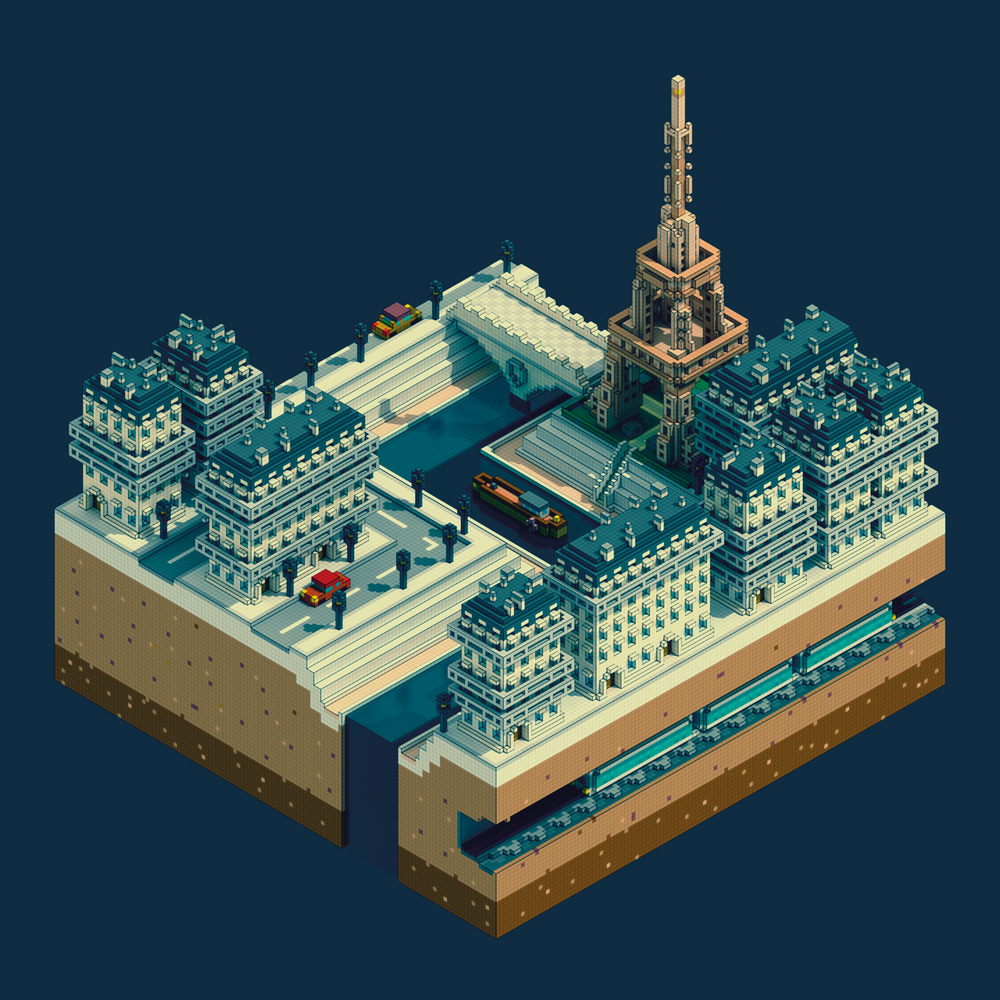
As Sir Carma’s skill and style have evolved, so has the technology available to hone his craft. Virtual reality (VR) is quickly rising in importance in the digital arena, but Sir Carma doesn’t feel it’s currently a great fit for voxel art. “I have a lot of people who approach me to do voxel art for VR,” he says, “but I’m not really interested, because most of the projects for VR are in first-person view, and that would mean getting close to the voxels. I really don’t like how voxels look when you look at them too closely.” As a result, all of Sir Carma’s work is presented from an isometric angle a good distance away from the subject. “Maybe we’ll find a nice concept for VR that goes with that kind of view—maybe a city builder.” Regardless of whether he will be creating artwork for VR, Sir Carma says he is still excited to see how the technology develops.
Sir Carma’s tune may change in the future with 3-D sculpting. Major technology developers of the HTC Vive and the Oculus Rift have announced that a significant part of the plans for their VR gaming platforms will involve 3-D sculpting. The Vive has controller input in its base form, using its two controllers and Google’s Tilt Brush program for VR painting, and the Rift will be launching a 3-D sculpting and painting program called Medium when the upcoming Oculus Touch controller arrives this year. Thanks to 3-D printing, there is also the potential for works of art created by these programs to live outside their digital confines. Though creating physical sculptures of these digital works is currently an expensive venture, Sir Carma believe it’s perfect for voxels, because everything is crafted in cubes.
[the_blockquote]
Digital platforms open up opportunities for artists who may not be as skilled or as interested in traditional styles, but who are still capable of creating beautiful things.
[/the_blockquote]
Block by block, Sir Carma has crafted some truly elegant and complex scenes with voxels, blazing a creative path for himself while staying inspired by video games and other visual mediums. Digital platforms open up opportunities for artists who may not be as skilled or as interested in traditional styles, but who are still capable of creating beautiful things. As technology grows, so does the chance that we’re all able to witness the artist inside each other in some way, without limitations.
— V —
Share This Story!
KEEP UP WITH THE LATEST STORIES FROM VIE



